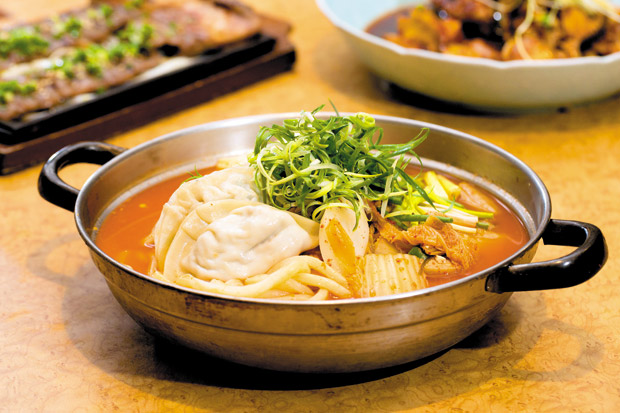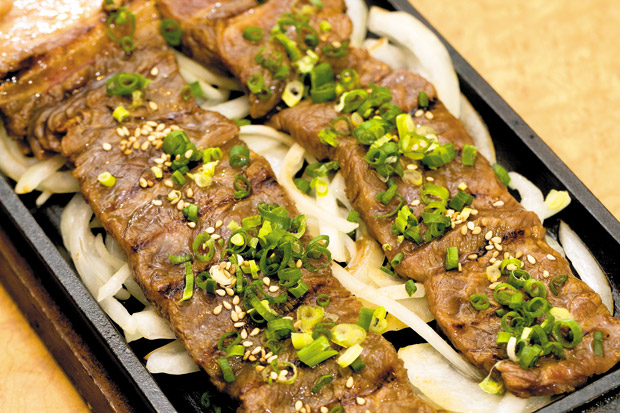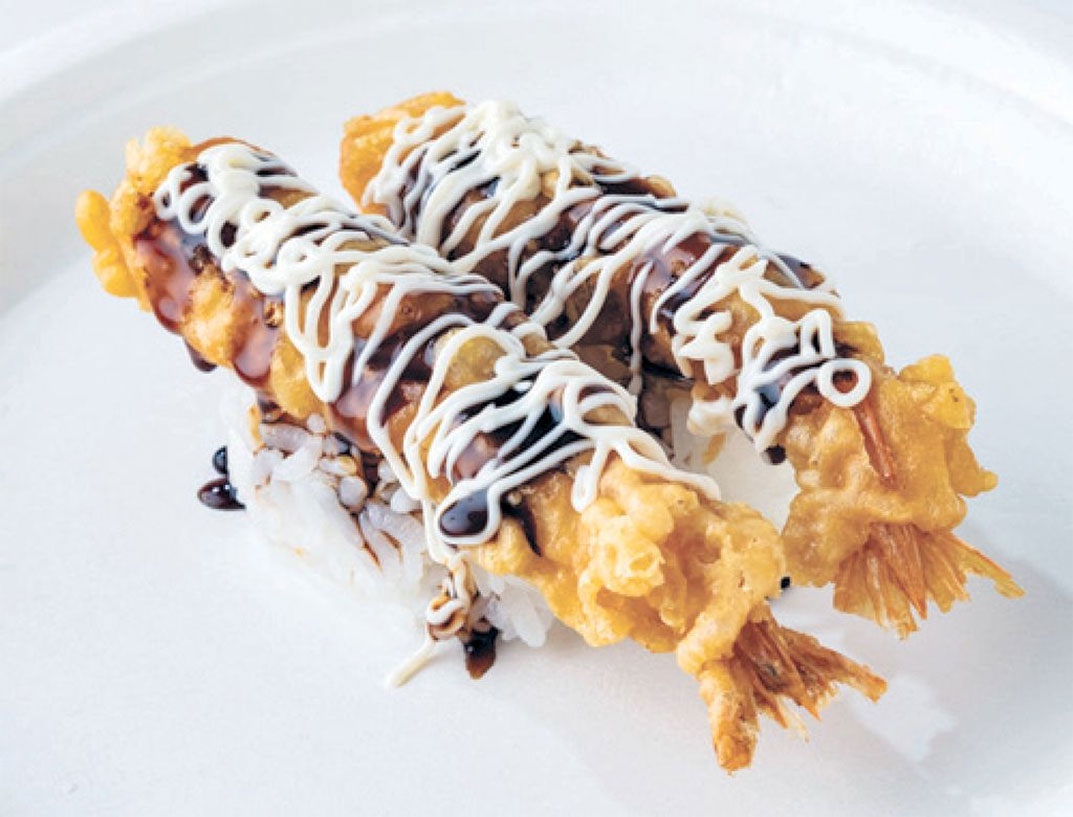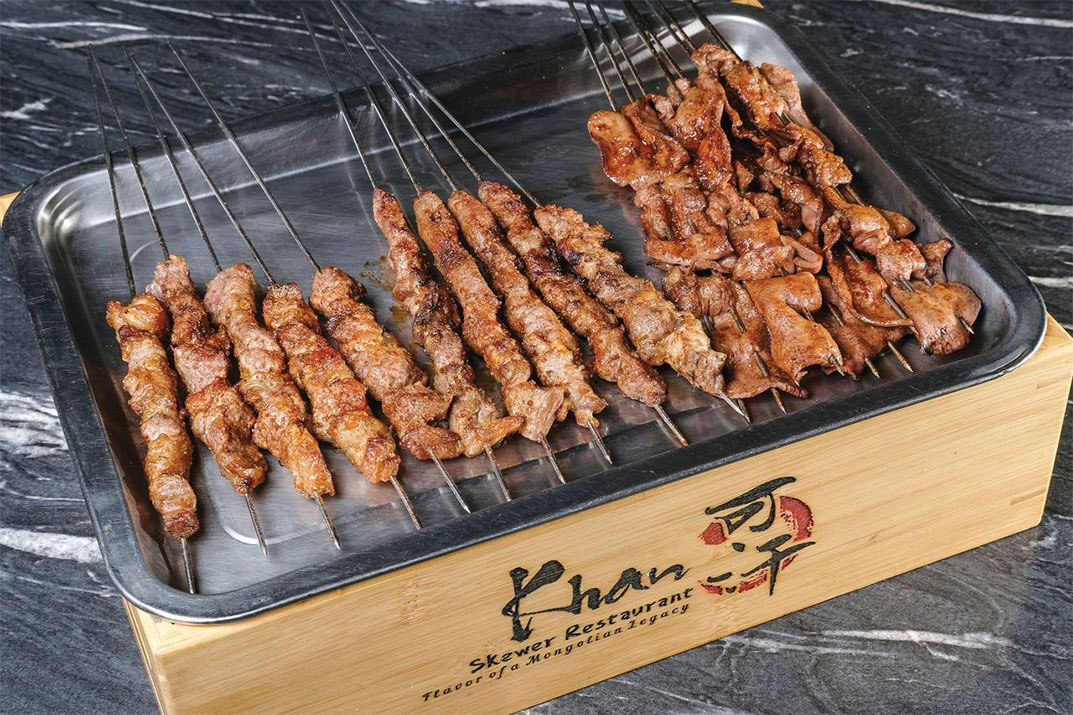Korean Food Like You’ve Never Had It Before
Cover Story FeaturesAugust 27, 2017
Story By: Caroline Wright | Photos by: ANTHONY CONSILLIO
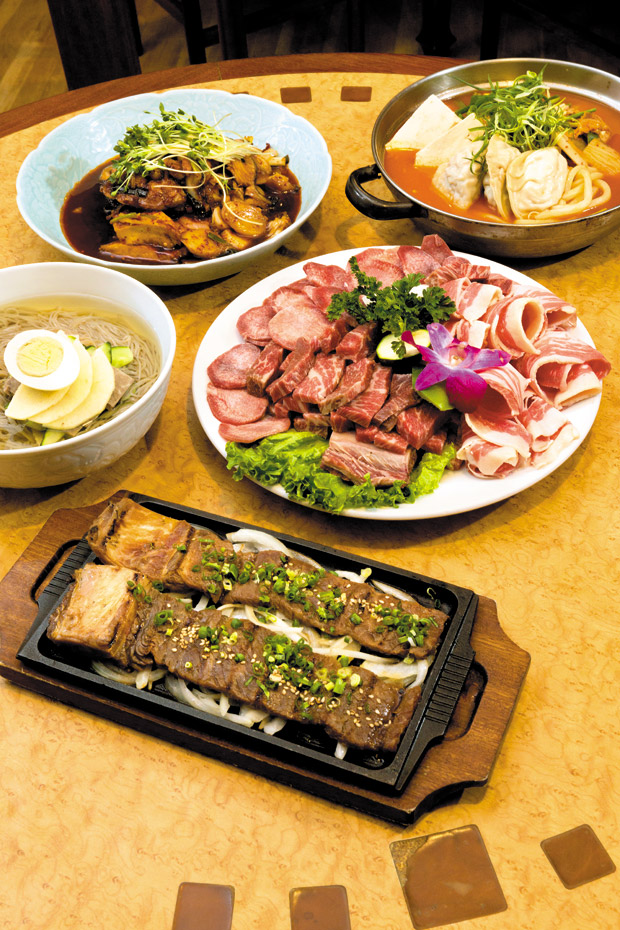
(Clockwise, from bottom) Galbi ($28.95), Mul Naengmyeon ($15.50), Yoojaecheong Eundaegu Jorim ($33.50), Kimchi Jeongol ($22.95), and Modeum ($52.75) Yakiniku Barbecue Dish
When local folks think about Korean food, what image comes to mind?
For most of us, it’s probably “island-style” Korean: a Styrofoam box with two scoops rice, a pile of meat jun and kalbi, and plenty of kimchi.
But our island interpretation only begins to scratch the surface of Korea’s ancient culinary tradition. For a real introduction to authentic Korean food, we needn’t board a jet for Seoul. Instead, we can head to Seoul Jung at Waikiki Resort Hotel, for a perfect introduction to the world of authentic Korean cuisine.
“Local-style Korean food — mainly kalbi, barbecue chicken, meat jun and kimchi — has very mild flavors, and is produced in bulk for the mass market (in Hawaii),” explains Edwin Dagdag, food and beverage manager for the hotel. But at Seoul Jung, he explains, the flavors are bolder than most island versions.
“The chef and kitchen staff prepare each dish so the quality, freshness, tenderness and intense flavors are exactly what you would experience in Korea,” says Dagdag.
With a kitchen helmed by executive chef Doung Hun Kim (formerly executive chef at Seoul Jung at the Grand Wilshire in Los Angeles), Seoul Jung’s menu offers 53 truly authentic Korean dishes, ranging from individual servings to shared dishes like hot pots and yakiniku barbecue.
Diners at the restaurant, located on the hotel’s second floor, often include Korean Air crewmembers and Korean tourists hungry for familiar dishes they’d find back home. (That’s only appropriate, as Korean Air owns both the hotel and the restaurant.)
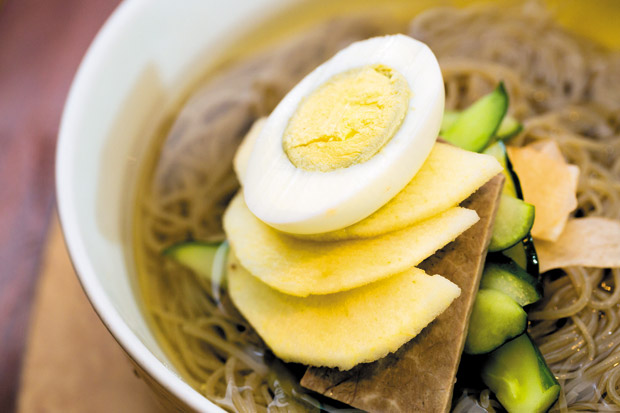
Mul Naengmyeon ($15.50) offers buckwheat noodles, vegetables and egg garnish in a delectable chilled soup.
This week’s featured dishes in Dining Out are superb examples of authentic Korean flavors. On these steamy summer days, Mul Naengmyeon ($15.50) — traditional buckwheat noodles in a chilled soup, garnished with egg and seasonal vegetables — is a perfectly cool option. And hungry locals are sure to recognize kalbi, or Galbi ($28.95) on the menu — beef short ribs, hand-cut and marinated overnight, mouthwateringly tender and served on a sizzling platter.
For seriously authentic “Seoul food,” try Yoojaecheong Eundaegu Jorim ($33.50), Korean style butterfish (black cod) served hot with tofu, rice cakes, peppers, chili and citrus sauce. It’s a big favorite of the Korean Air flight crews, according to Dagdag.
Kimchi Jeongul ($17.95 small, $22.95 large; minimum two people) is a spicy stew with house-made kimchi, tofu, beef and seasonal vegetables. The ingredients are cooked and served in a heated stone pot, which brings out the full flavor of this dish. And for those who love seasoned, spicy, savory Korean meats, the restaurant’s Yakiniku Barbecue Dishes ($23.95-$52.75) provide an irresistible invitation to grab the tongs and try your hand at tabletop grilling.
There’s free parking with validation, and the restaurant offers a 20 percent kamaaina senior discount for those 55 years and older. And Seoul Jung’s banquet rooms can accommodate groups of 200 or more, perfect for celebrations and meetings, with menus prepared to your specifications.
Finally, if you’re so inclined, don’t forget the soju. “Soju is a must for any dish you choose,” says Dagdag. “Pour a glass for your dining guests, and they pour a glass for you. It shows respect and friendship!”
DID YOU KNOW?
The simple, understated decor at Seoul Jung is a fine backdrop for images shot by Cho Yang-ho, an enthusiastic and gifted amateur photographer from South Korea. Seventeen of Mr. Cho’s photographs, many aerial shots and striking landscapes of small Korean villages, hang on the restaurant’s walls. As it happens, Mr. Cho isn’t just a hobbyist photographer; he’s COO of Korean Air (owner of Seoul Jung) and executive of the Hanjin Group, one of the world’s largest transportation conglomerates.
SIPPIN’ ON SOJU
Add true authenticity to your meal with soju. This distilled rice liquor is Korea’s national drink. One must never pour one’s own soju; an elder member of the group always pours the first shot. Accept the glass with two hands, turn your face to the side to avoid eye contact with the pourer, and drink the shot neat. The first shot follows this strict ritual, but after that, if you see an empty glass, offer to fill it.






